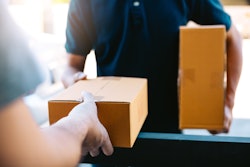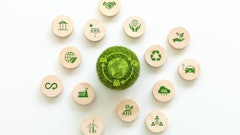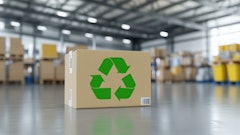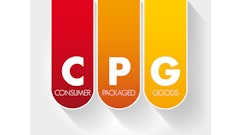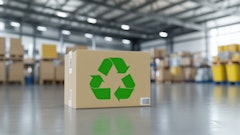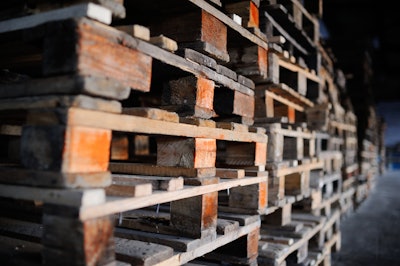
Gone are the days when packaging was seen as something solely needed to make products safer and easier to handle while also protecting them during storage, transport and delivery. Driven by changing consumer demands and expectations, as well as supply chain efficiency initiatives, packaging has become a a strategic component of the entire supply chain.
The increasing speed, scale and complexity of modern logistics processes – especially those driven by the growth of e-commerce and the rise of omnichannel – are driving up packaging costs and creating inefficiencies and complexity in the supply chain. Companies want branded packaging that presents their products in a positive light, while consumers want simple-to-use packaging that is easy to recycle or re-use.
As companies place more focus on their packaging operations, they are gaining a better understanding of how the area presents significant opportunities for gains in consumer experience, efficiency and sustainability.
It is within this context that a great deal of innovation is occurring in this area of packaging. Logistics professionals are rethinking packaging and seeking out innovative, sustainable solutions and new approaches that promise enhance sustainability initiatives and transform packaging operations found in today’s supply chains.
Following are five of these innovative technologies and approaches that promise to not only deliver sustainability gains, but also reinvent and evolve packaging operations.
1. Carton optimization
Research conducted by DHL Supply Chain has found that, on average, 24% of the volume of an e-commerce package is empty space. Bringing data and analytics into packaging can help optimize the process and eliminate waste. There are a number of algorithmic optimization tools on the market that can determine the optimal number, size and shape of cartons to increase efficiency, reduce waste and eliminate the need for fulfillment staff to make packaging selection decisions.
These systems use advanced algorithms along with item-level dimensions (e.g., weight, size and shape) to identify a minimum number of standard-size cartons required to maximize carton and pallet utilization at a facility. They can select the ideal carton and filler amount for each order in near real-time, as well as determine how the product(s) should be placed within the carton.
2. Precision, sustainable wrapping
Plastic shrink wrap is a universal staple of packaging. The material is cheap, versatile, easy to use and extremely effective for securing cartons on pallets and protecting packages in transit. The downside is the huge quantities of waste that is generated from shrink wrap.
Reusable pallet wraps that can be removed and re-used can provide a viable alternative to one-use plastic wrap for certain products and predictable, closed-loop supply chains. In addition, mobile wrapping robots or precision wrapping dispensers can evenly stretch plastic wrap around the pallets to increase consistency, reduce waste and eliminate bottlenecks at pallet wrapping stations.
3. Packaging on demand
For the last few years, automated solutions have been entering every stage of the packaging lifecycle. One area that is seeing increased interest is on-demand production of right-sized packaging. Automated systems use 3D scanning technology to establish the overall dimensions of the item to be shipped. This data is used to cut a right-sized carton and the item is then inserted automatically into the box, along with appropriate documentation, marketing collateral and other personalization. This approach not only minimizes packaging material used per piece, it also saves filler material and eliminates scrap. In high-volume environments it can also help reduce costs and dramatically increase throughput.
4. Reusable packaging
As e-commerce becomes the primary retail channel for more products, there is a need for packaging designed specifically for direct-to-customer shipments. While branding and personalization play a large part in the customer experience for these shipments, packaging that can be reused is beginning to play a larger role. This approach is especially ideal for closed-loop supply chains where customers have regular, repeated interactions with the company, such as with a subscription service. Think of a fashion subscription service where subscribers receive a set number of clothing items. They pay for the items they want to keep and use the container to ship back the items they do not want.
The use of standardized reusable packaging can even enable different e-commerce companies to share the same packaging pool, further reducing costs, increasing efficiency and simplifying management activities such as container inspection, cleaning and repair.
5. Sustainable pallets
Innovation has been slow in the pallet space, with wood continuing to be the dominant material used. With the global demand for pallets increasing every year, most of the wood waste continues to end up in landfills. Several alternative pallet options are currently available, including 100% natural and biodegradable pallets made from the husks of coconuts. These coconut pallets are sturdier and do not hold moisture the way wooden pallets do. They also do not contain any nails or synthetic resin, as they are produced with heat and high pressure. And, when it reaches the end of its supply chain life, the material can be used as soil improver in agriculture. While wood pallets still provide value for long-lasting purposes, the coconut pallet can be an ideal export pallet where durability and ISPM15 compliance is important.
There are no simple, silver bullet solutions to today’s packaging challenges when it comes to efficiency and sustainability. The best approach is for companies to either pursue a transformational commitment to adopt and integrate new technologies and processes, or work with a third-party logistics (3PL) provider focused on packaging optimization, sustainability and efficiency. The good news is that there are no shortage of innovative approaches and sustainable options that can help shape the future of packaging operations and processes.





